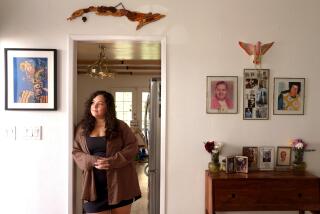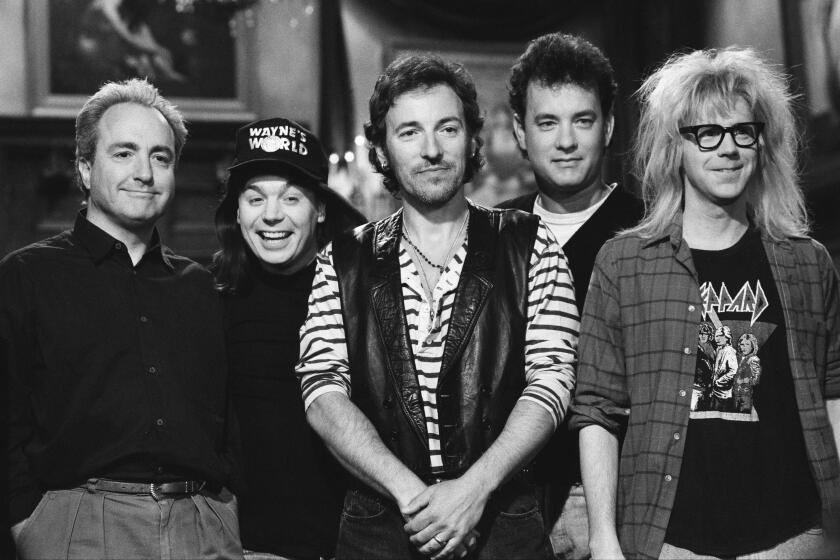The Fine Art of Landing the Right Actor : Casting Departments Cast a Wide Net to Offer Directors Some Choice Catches
- Share via
Says New York Shakespeare Festival producer Joe Papp: “I employ three full-time casting directors. I couldn’t work without them.”
Says Taper chief Gordon Davidson: “Back at UCLA I did it all. But when I got here, I had to create a casting department.”
Says the Los Angeles Theatre Center’s Diane White: “We’ve had a casting director and a casting associate ever since this theater opened.”
What is a casting director? Not the person who decides who’s going to be in the show. That’s the director’s job.
“We do what a good editor does,” said independent casting director Rick Pagano. “We cut away the chaff. We bring the choices down to six or seven people.”
“I equate my job to a buyer in a department store,” said South Coast Repertory casting head Martha McFarland. “We select merchandise for the buyer, the director. The director doesn’t have to see 100 actresses. He will see maybe 25.”
That can mean a lot of shopping. Amy Lieberman, who has just switched to film and TV casting after heading casting at the Mark Taper Forum for the last 3 1/2 years, said that she “saw 225 actors that we had all heard of” in casting Sam Shepard’s “A Lie of the Mind” for the Taper last winter.
“Sometimes I would be casting six Taper things at a time,” she said. “Casting a work for the Taper’s Main Stage can take up to two months.”
Shopping for actors is only part of the casting director’s job. Then the actors have to be landed. It’s a more difficult process in Los Angeles than in New York, because of the Hollywood connection.
One problem: agents. Says Lars Hansen, managing director of the Pasadena Playhouse: “L.A. agents don’t want their clients to do theater.”
For instance, Rick Pagano and Sharon Bialy of Pagano/Bialy Casting sought an actress last year to audition for the role of a 60-year-old woman in the New Mexico Repertory’s “The Road to Mecca.”
“When we went to a certain actress’ agent, he told us, ‘My client is going out of town,’ ” Bialy said. “When we called her directly at home, she said that was not true. We mailed her the script ourselves.”
Another problem: Getting the actor to read for the part.
When the Mark Taper five years ago was casting for the lead of Maggie in “Cat on a Hot Tin Roof,” casting director Lieberman said the hot prospect was Lesley Ann Warren.
“She was a strong candidate, but she wouldn’t read and canceled herself out. We went through 150 Maggies and 150 Bricks. It was ridiculous,” said Lieberman. “In some desperation, I said, ‘Remember that girl in the tight white pants?’ ”
Somebody remembered. The actress in the white pants was Kirstie Alley, and she got the part.
The playwright also may have a voice in the casting process. Lieberman recalled that one recent Taper playwright “wanted a certain woman in his play. You wanted to tell the playwright, ‘Look, there are better actresses.’ A casting director has to know how to play games and to act to get a director to do what you want.”
Are there politics in casting? Do you have to know somebody? Artistic directors deny it. The Mark Taper’s Davidson is the only one who cheerfully admitted an instance of casting politics.
“For ‘The Dybbuk’ (in 1975),” Davidson said, “I turned to the casting director and said, ‘I want you to cast my dad.’
“My father (the late Jo Davidson) brought to the production 43 years of teaching theater. He got his Equity card and he had a small role.”
Only a Grinch would fault that. But the Taper did raise some insider eyebrows when director Robert Egan cast his wife, actress Kate Mulgrew, in two of the Taper’s Repertory productions, “Measure for Measure” in 1985 and the title role in “Hedda Gabler” in 1986.
Lieberman defended Egan’s casting: “Can we prove there was somebody available better for the parts? No.”
Davidson said: “I don’t feel defensive about Mulgrew. She auditioned for the parts. Did Egan want her? I think so. Most of theater gets done in highly professional relationships. In general, directors like to work with actors they know--and vice versa.”
Former Taper casting director Gordon Hunt, who has written a popular guide book for the beginning actor (“How to Audition,” Harper and Row), said “The Taper has never been a closed club. Much of my casting came from getting out and seeing Equity Waiver.”
And forget the casting couch stuff, Hunt said. “I don’t know about movies but in theater there is no time for it. When actors come into theater, they think it’s more serious. Which it isn’t,” he added with a smile.
LATC resident producer Diane White and her artistic associate, Lacey Bishop, cast the recent “Kingfish” from both inside and outside the company’s self-described “family of actors.”
White explained that there is “nothing closed” about the LATC. “We hold open auditions and we do bring in actors from the outside--I met Buck Henry and asked him to do ‘Kingfish.’
“If it comes down to a disagreement about casting a lead in a show,” White said, “Bill (Bushnell, LATC producing artistic director) makes the decision.”
That is common practice among artistic directors. As Papp said, “In terms of all major roles, I see them. I try not to use power, but if I don’t like an actor he won’t be in a production. If it comes down to push and shove, I’m it.”
Hunt recalled that Davidson at the Mark Taper “used to tell me to narrow it down to the last three candidates.”
Hunt grinned at his “toughest assignment”--for the Taper’s production of “Savages” in 1974.
“Gordon said to me: ‘I’m going to need eight people under 5-6. All have to look like Amazon natives, and they all have to appear nude on stage.’ Now that was an assignment.”
Can there be too much reliance on a casting director? Can a director or producer lean too heavily on a casting lieutenant’s opinion and personally miss finding that startling talent who remains forever undiscovered?
The Taper’s Davidson concedes there is “a downside” if the artistic director just sits back and waits for someone else to give him a list of names.
“If all you do is see a list, you’re not doing the job,” said Davidson. “I have to help shape that piece of paper with the names on it. You must give input back to the casting director. It has to be a two-way dialogue.
“Casting is a very hands-on art. I rely on the casting director to bring me as full a plate as possible, but I must not lose touch with the process of searching because, finally, casting is a matter of personal taste.”
Des McAnuff, artistic director of the La Jolla Playhouse, said: “I would consider myself irresponsible and weak if I let the casting director cast. Casting directors provide choices. There are good actors who just don’t read well in auditions, which are artificial in the best of circumstances. Rehearsal time, for me, is the same as casting time.”
The LATC’s Diane White, who once last year tried to do without a casting director and found it didn’t work, said there is such a thing as “a casting director mentality, and in Hollywood it is a mentality. Casting directors can like to be autonomous. But theater is collaboration.”
More to Read
The biggest entertainment stories
Get our big stories about Hollywood, film, television, music, arts, culture and more right in your inbox as soon as they publish.
You may occasionally receive promotional content from the Los Angeles Times.










